Last year I traveled continuously from mid-May to early November, not to mention a couple other months on the road earlier that year. One of the trips was to Wyoming in July and while there Jim Bennett and I visited Frontier Astronautics rather unique home office.

Jim and I drove for a long time.
Photo: copyright Dale Amon, All Rights Reserved
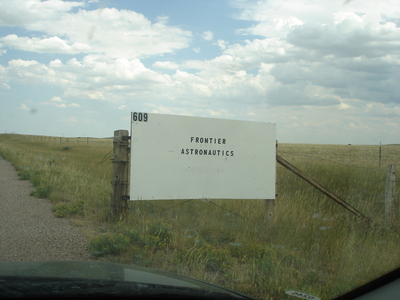
We found their sign miles down a back road off a County road.
Photo: copyright Dale Amon, All Rights Reserved
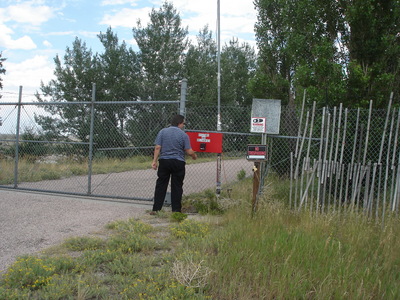
After a ‘short’ drive up their private road we arrived at the main gate where Jim rang the door bell.
Photo: copyright Dale Amon, All Rights Reserved
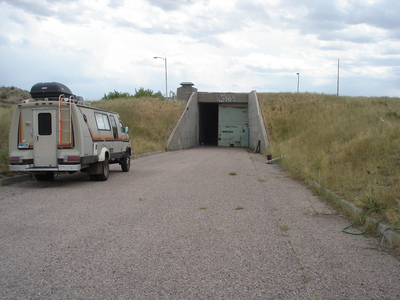
Two engineers came out and led us on the trek to the bunker doors. They are large enough to pass an Atlas missile on a truck.
Photo: copyright Dale Amon, All Rights Reserved
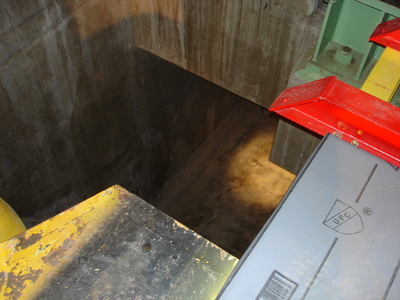
Back in perhaps 1962 the bunker center section held a liquid fueled Atlas ICBM. This is the flame trench that would be underneath the ICBM. The sections of the bunker to the left and right contained the fuel and oxidizer tanks used to fuel it. The center section is now (probably) the world’s only indoor engine test stand. Interior walls are 30 inch thick reinforced concrete: this allows the engineers and their monitoring gear to sit mere feet away from a firing engine.
Photo: copyright Dale Amon, All Rights Reserved
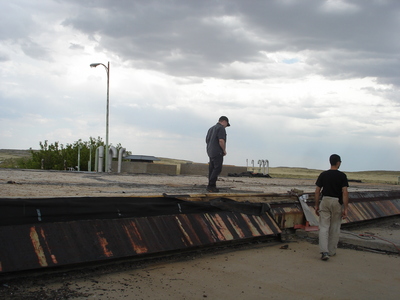
The office also has a sun roof… These many, many ton reinforced concrete doors were built to slide to either side so the Atlas could be raised into firing position.
Photo: copyright Dale Amon, All Rights Reserved
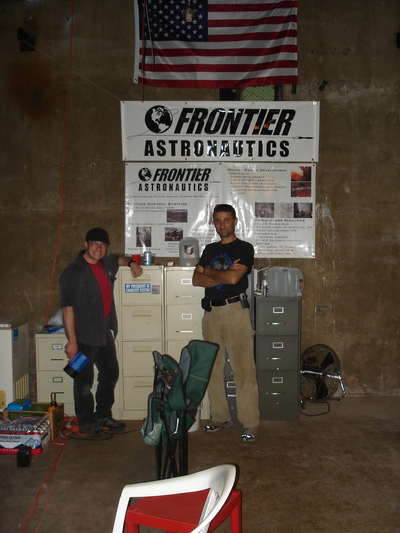
Speaking of the engineers, here are the two who gave us the grand tour.
Photo: copyright Dale Amon, All Rights Reserved
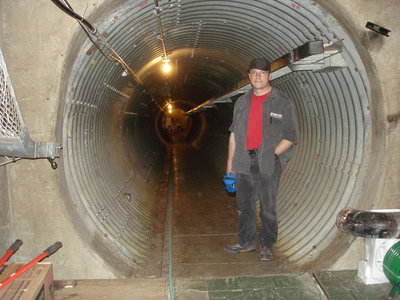
This is the tunnel to what was once a control room. The consoles are long gone and it now contains a modern flat where the owner, a former Titan IV engineer, and his wife live.
Photo: copyright Dale Amon, All Rights Reserved
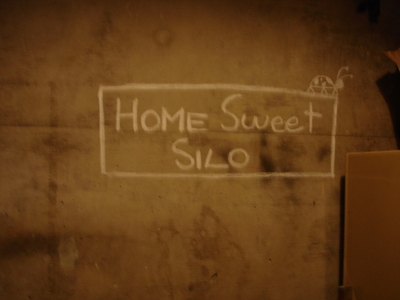
It is without a doubt the only family home with an indoor rocket engine test stand.
Photo: copyright Dale Amon, All Rights Reserved




Okay now THAT is a seriously cool place to have an office!!!
http://www.silohome.com/
Speaking of repurposed cold war infrastructure, here is the data center where my organization has its server machines: http://usshc.com/
Hey Dale – Ron Paul!
Off topic for this article. Any further discussion of non-Space politics will be removed DB. You’ll have to wait for my next political post. Sorry.
Dale,
What do they do ? You’ve written about the “where” but not about the things they do, that you saw there.
They live there Jacob!
They design and test rocket engines and reaction control systems. I believe they also will rent out the use of their test stand but do not take my word for it.
You can read more about Frontier Astronautics and its founder at http://www.denverpost.com/business/ci_4809144
Video of Tim at http://www.youtube.com/watch?v=MW1fbPrnc1U
D’oh! I somehow truncated the “1” when I copied-and-pasted the text above. The correct date of the article is 12/10/2006 (December 10, 2006), not 2/10/2006.